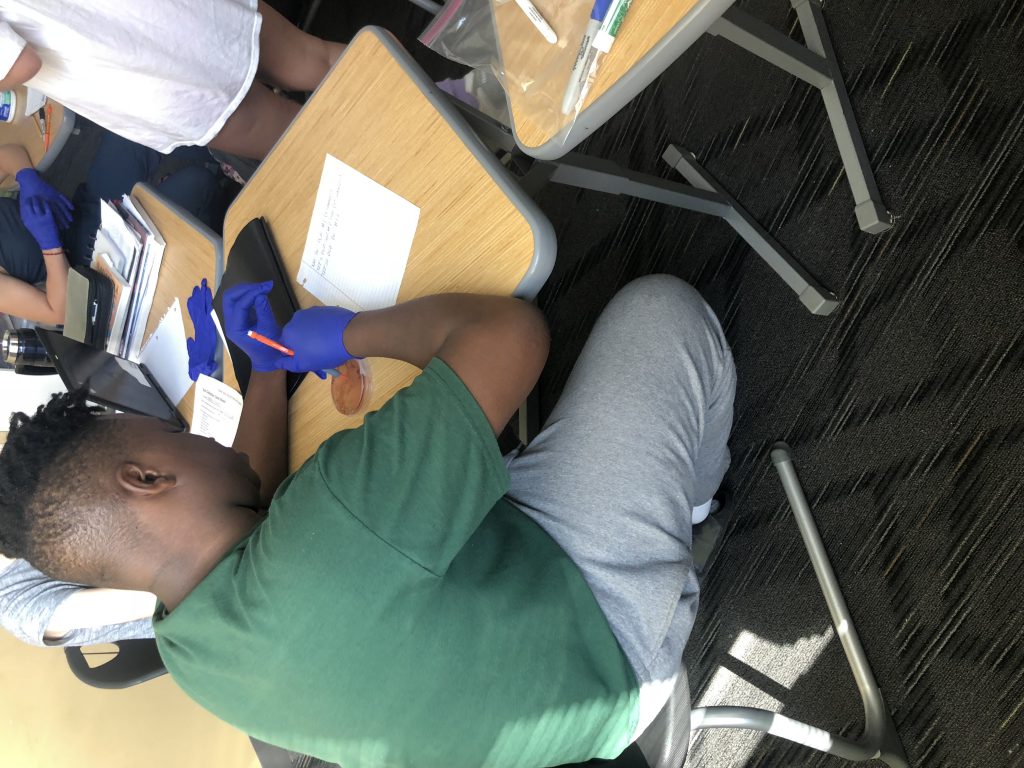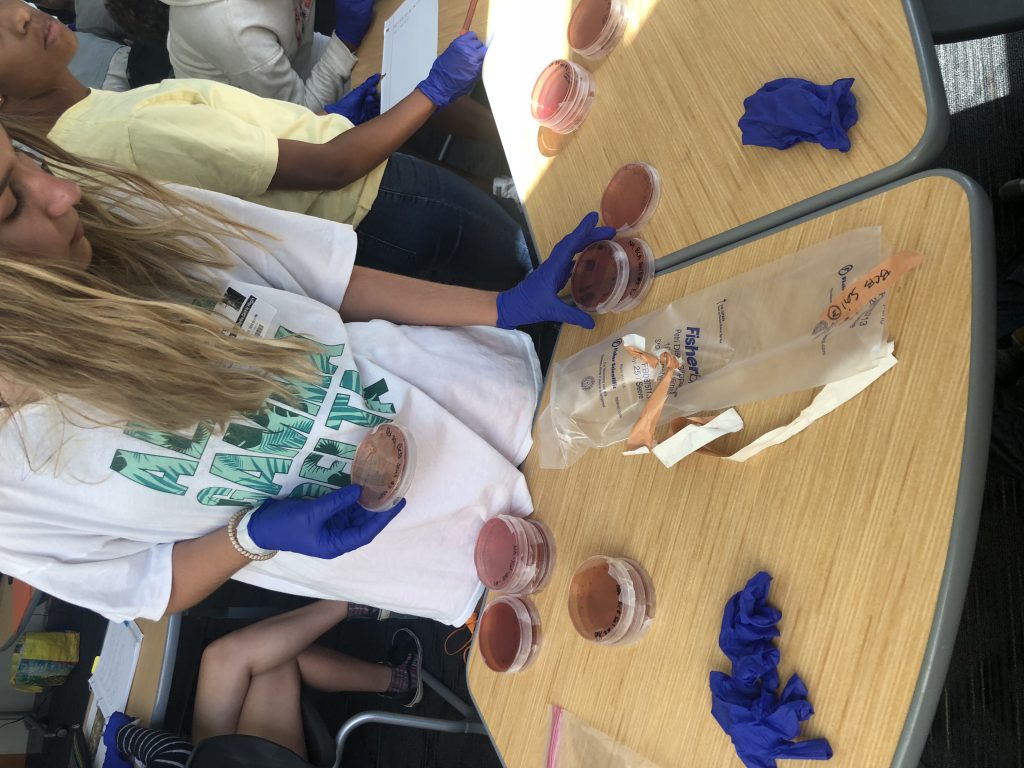

On Friday, September 27th, I went to Clarke Central High School during their last period to assist AP Environmental students in the antibiotic resistance lab. Two other girls in this Biology class and I worked with a group of 6 students to count the number of colonies on each of the plates. We showed the students how to count them, explained what a colony was and looked like, and described what we were actually doing. Our soil sample was actually collected by one of the high school girls in our group, which she found in her backyard.
When we first separated the plates into Set 1 and Set 2, we noticed that Set 1 did not have a sufficient number of colonies on the plates and that maybe people in our biology class plated them wrong. The second set, however, had more visible colonies that were actually countable. We gave each of the high school students a plate and a marker to count the number of colonies, which they then would write the plate description and number of colonies on a piece of paper. To ensure accuracy, we would then switch the plates between the students so that each plate was counted twice. These numbers were then reported to the one student who entered the data into the spreadsheet and website. I felt more knowledgeable this time around, compared to when we counted them in class because I wasn’t sure what to count as a colony and what we were actually finding from all this counting. Now, I could actually explain to the students what we were doing and the effect of the antibiotics on the soil.
Overall, I think this experience was a lot of fun- I met two girls who I helped count plates with while they asked me about college life. I was a little surprised when I walked into this AP Environmental Science class, mainly because they all looked younger, like freshmen and sophomores, whereas at my school you had to be a junior or senior to take this course. Some of the students seemed more interested in counting the plates than others, but overall, I think that the students enjoyed having college kids from a big school like UGA come into their classroom to help.
